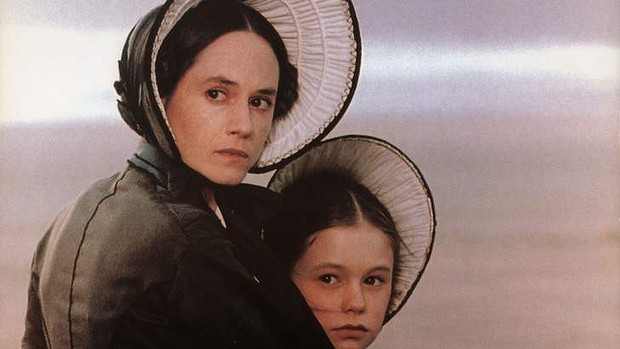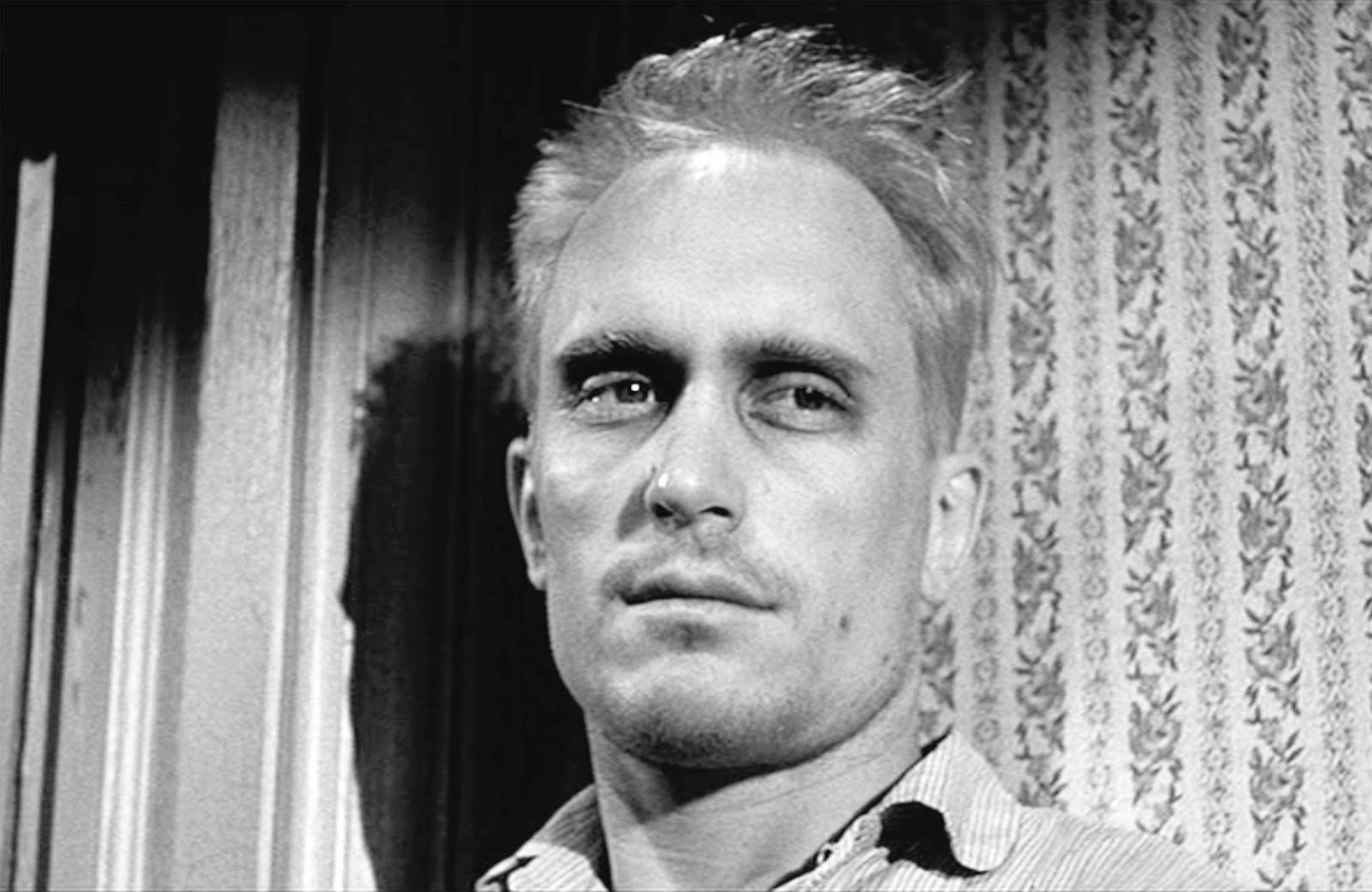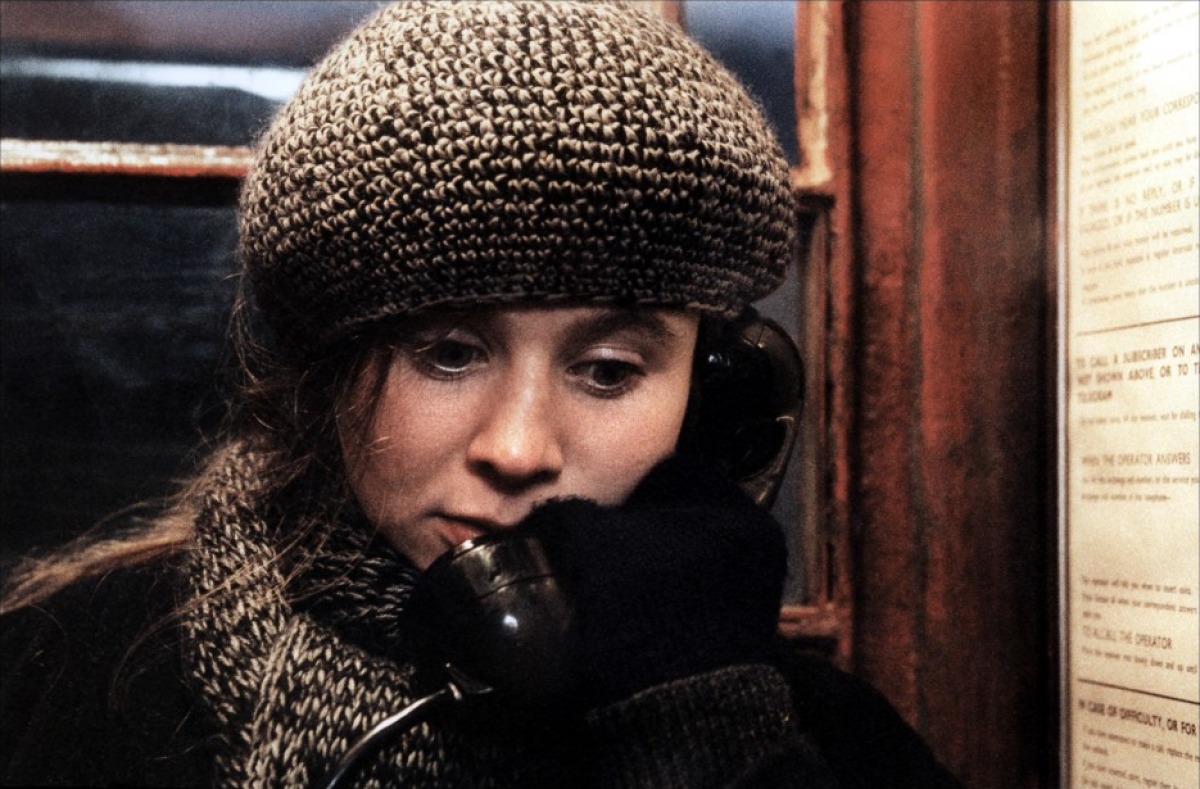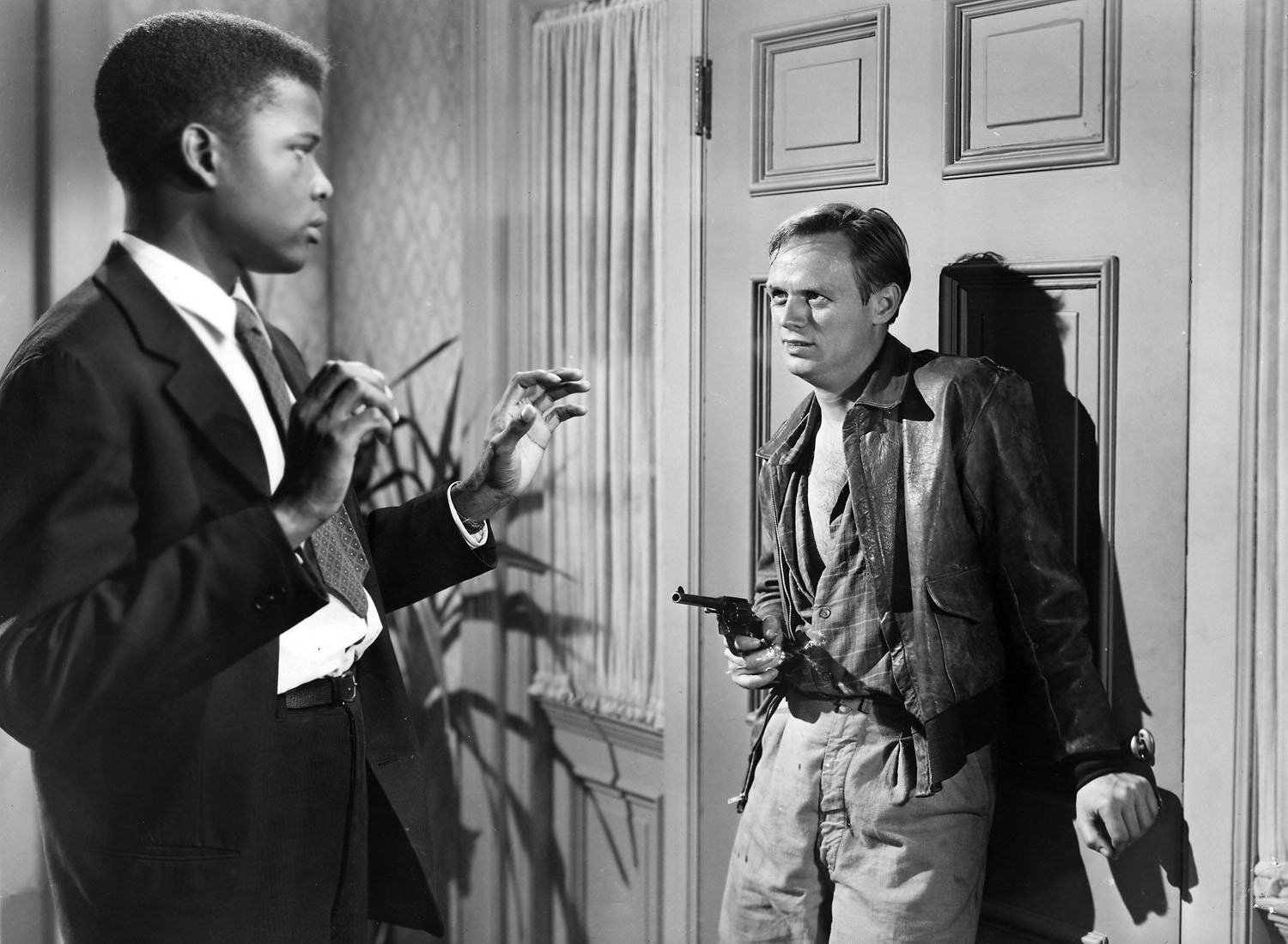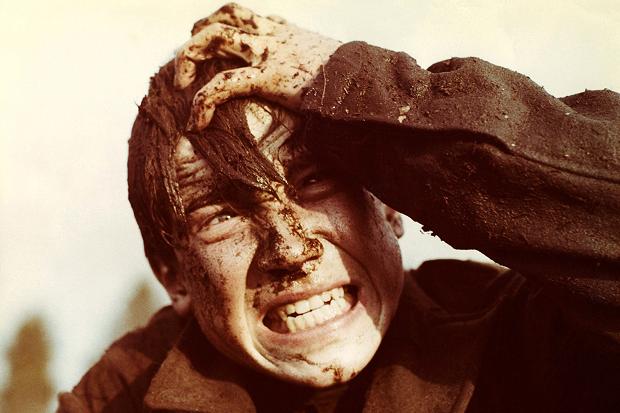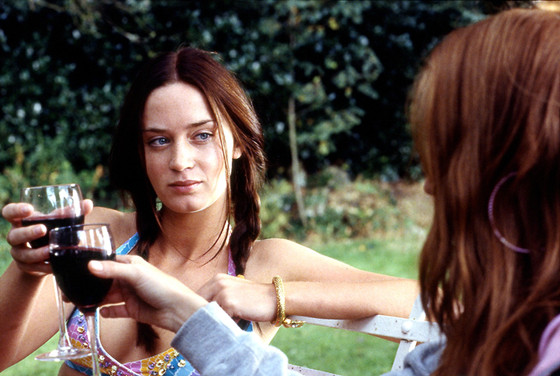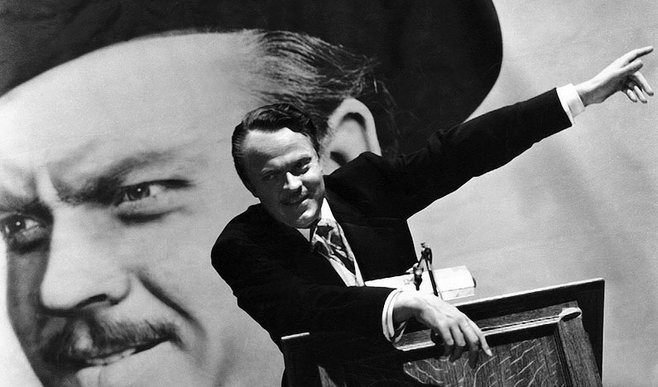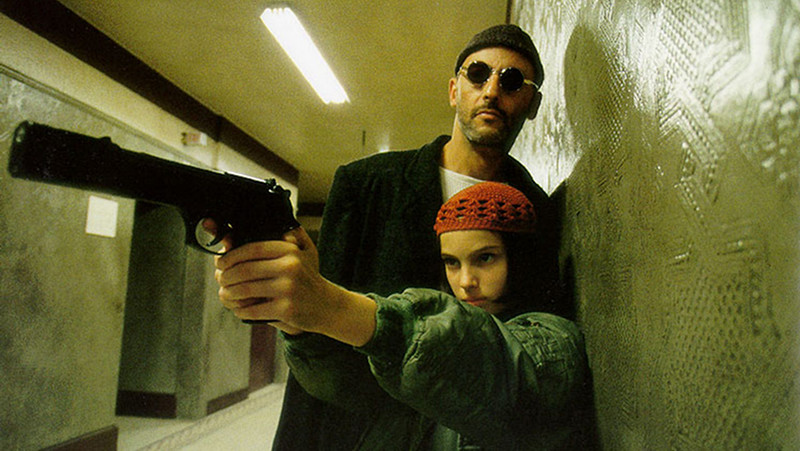10. Anna Paquin in The Piano
A mute Scottish woman along with her young daughter and her beloved piano are sent to New Zealand by the woman’s father. She is sent there in order to marry a rich frontiersman. The frontiersman abandons the piano, telling Ada that there is no space in the house.
George, a local worker, their neighbor and the new owner of the piano, tells Ada that she may have her precious piano back if she teaches him to play the instrument. At first Ada despises him, but later their relationship slowly turns into a very complicated one.
Since Ada is mute, Flora, her daughter, also her interpreter, sounds more and more like her inner voice. Anna Paquin was only 11 when she received the Best Supporting Actress in 1994. She was a big surprise.
9. Robert Duvall in To Kill a Mockingbird
Director Robert Mulligan made this classy masterwork which is based on Harper Lee’s masterpiece with the same title. The story takes place in a racist background in 1932 Alabama. Atticus Finch, a lawyer, agrees to defend a young black man who is accused of raping a white woman. The final verdict is on the hands of an all-white jury.
The story begins with a tom-boy scout Jean Louise Finch and her brother, the lawyer’s children. They spend their childhood playing with each other and spying on Arthur “Boo” Radley, a discrete stranger. They understand more about the world when exposed to the evil and racism in their town.
When their father agrees to defend Tom Robinson, the kids are bullied in the school for the lawyer’s decision. In the court Tom agrees that he has kissed the white girl, but nothing more happened. His words are enough to infuriate the all-white jury.
When Atticus arrives home he learns that a deputy has killed Tom during his transfer to prison. When the lawyer and his son go to Tom’s house to notify his family, they have to face the unpleasant reaction of Bob Ewell, Mayella’s father.
On Halloween the kids are attacked by Ewell, and saved by the shy Arthur “Boo” Radley, who kills Ewell. The sheriff agrees to tell a false version of the event and reports to the authority that Ewell falls on his own knife.
Considered as one of the best films of all times, To Kill a Mockingbird tells the drama of a honest man inside an evil habitat through the eyes of his own kids. Robert Duvall’s debut is more than pleasant in the delicate role of the reserved Arthur “Boo” Radley, a very significant key character for the film.
8. Emily Watson in Breaking the Waves
Watson was virtually unknown until Lars von Trier chose her to star in his 1996 controversial film, after Helena Bonham Carter dropped out “at the very last minute”.
In a deeply religious community in the north of Scotland, in the early 1970s, a young woman Bess McNeill falls in love with Danish oil-rig worker Jan. Soon she marries him. In an accident, Jan becomes handicapped and cannot have sex with his wife any more.
The paralyzed man asks her to find a lover. Bess doesn’t know what to do. Jan then attempts to commit suicide but fails. He thinks that the only way to revitalize his spirit is to make Bess find a lover and tell him the details about their love-making.
The main theme is similar to Vikings invasions in Grand Britain. The Pagans against the Christian ones. The film is the first film in Trier’s Golden Heart Trilogy. Thanks to Lars, Emily Watson is an important name in film industry today.
7. Sidney Poitier in No Way Out
Dr. Luther Brooks is the first Afro-American doctor at the urban county hospital. He’s a brave doctor, but because he lacks self-confidence, he offers to work as a junior resident for another year. Two brothers, Johnny and Ray are brought to the prison hospital area after being shot by police during a robbery. When Luther comes to help the two men, Ray inveighs his racist rancor against the black doctor.
Johnny dies during the spinal tap procedure operated by Luther. Luther chief’s doctor, Dr. Daniel Wharton says that maybe there was no brain tumor at all, so probably Johnny died for nothing. Luther insists on making an autopsy, but since Ray is not ok with that, Luther tries to convince the head of the hospital but fails.
Dr. Brooks and Dr. Wharton visit Johnny’s widow and tell her to talk with her brother-in-law for the autopsy again. But the naïve woman quickly turns on the opposite side and Dr. Luther Brooks finds himself in big trouble.
The Afro-American doctor is Sidney Poitier’s breakthrough in motion pictures. Fifteen years later Sidney became the first black person to win an Academy Award for the Best Actor, for his role in Lilies of the Field. On August 12, 2009, Sidney Poitier was awarded the Presidential Medal of Freedom, the United States of America’s highest civilian honor, by President Barack Obama.
6. Brad Dourif in One Flew Over the Cuckoo’s Nest
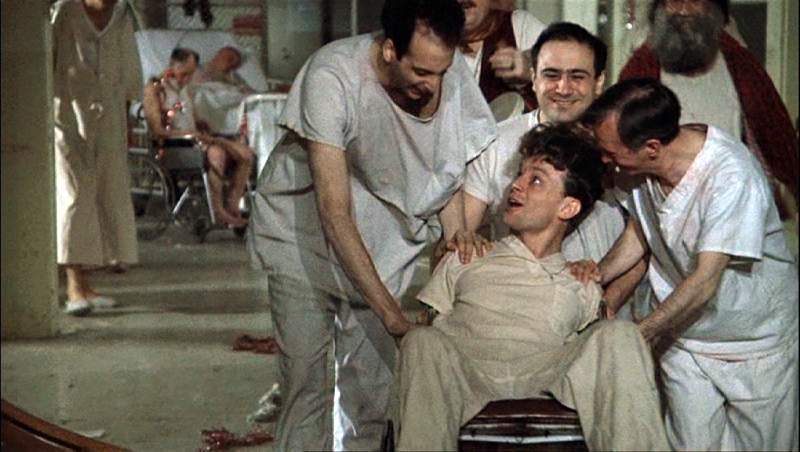
Next to Capra’s It Happened One Night, One Flew over the Cuckoo’s Nest is the second film that has won all five major Oscars. Randall Patrick “Mac” McMurphy is a recidivist sentenced for raping a 15-year-old girl. He’s convicted inside a mental hospital though he doesn’t show any sign of mental illness. After his hospitalization, he declares himself as the commander of these mad men.
The Big Nurse, Miss Mildred Ratched, is a tyrannical woman who terrifies the patients of the institution. Here comes a “war” between Mac and the Big Nurse. All the patients respect Mac, but they’re terrified by Miss Ratched. The big turn is when Billy Bibbit, the nervous, stuttering young man kills himself in the doctor’s office. Things become complicated afterwards.
It’s the second Milos Forman’s feature produced in USA, and it met with overwhelming criticism after its release.
Brad Dourif nailed it as good, shy, crazy Billy Bibbit in the masterpiece directed by an Wastern European genius in USA.
5. Aleksey Kravchenko in Come and See
For the time it was released, Come and See was so shocking for audiences that ambulances were called in to take away particularly impressionable viewers. The film was selected as the Soviet entry for the Best Foreign Language Film at the 58th Academy Awards, but was not nominated. It usually happened those days to films produced in communist countries.
A young boy (Aleksey Kravchenko) after finding an old rifle, suddenly finds himself in the forefront war in WWII Byelorussia, fighting for a hopeless unequipped resistance movement against professional German troops.Witnessing terrifying scenes of war and surviving horrifying situations, he first loses his innocence and then his mind.
Come and See is a powerful title derived from Apocalypse in Bible. Aleksey Kravchenko was 14 when filming started. After perfectly portraying Flyora in 1985, Aleksey made a very long pause. There are some roles that are too much for the actors for their very first time. After Floyra, what may come next? When in the Zenith, nothing comes next.
4. Emily Blunt in My Summer of Love
Some of you may think that Emily Blunt’s debut was in Boudica, but we’re not including acting debuts on TV films. Emily Blunt’s first breakthrough was in Pawel Pawlikowski’s slow, beautiful, moving, tender, moody, bittersweet film My Summer of Love.
The film was shot in five weeks during a burning hot summer in Yorkshire. It was the hottest summer in a decade. The script only contained 35 pages.
Emily portrays Tamsin, a well-educated, spoiled and cynical young woman burdened with an absurd revolt against everything around her. She’s a girl who doesn’t like her comfortable reality made possible by her family, and who tries to create a different reality, an imaginary one, at least for one summer.
The novel from which the film was adapted focused on the social and economic background of the two lead characters, but Pawel Pawlikowski only gives us little info about this background. He focuses on the psychological environment and shows us the essence of their (Tamsin and Mona) being. After all, Pawlikosky has too much European sensibility that doesn’t let him stay on the surface of things.
Tamsin is a very complicated character, smart, cynical, fantasist, opportunist, exotic, artistically portrayed by Emily Blunt. Emily Blunt’s debut seems to be a little bit underrated. Tamsin may be not an epic theatrical character, but sometimes portraying someone so close to oneself is way more ambitious than portraying a hyperbolic classical character.
3. Orson Welles in Citizen Kane
Unanimously acclaimed as the greatest film of all time, Citizen Kane successfully combines innovative techniques in editing, storytelling and camera movement. The credit is given mainly due to Orson Welles’ young age and his role as both the director and writer.
The keyword is Rosebud. It’s the last word coming out of Charles Foster Kane’s mouth while dying alone inside Xanadu. A group of reporters start digging into his past to find the meaning of the last word. They meet people who knew Charles Foster Kane, and through flashbacks we revisit the past life of the richest man in USA.
After his poor but sweet childhood, he becomes richer and more powerful since his early twenties. So he ends up losing his epic idealism of the beginning of the film and becomes an American dream come true. Where there is rise, there’s also fall. At the end, while alone in his deathbed holding a snow globe, he only needs Rosebud near him.
Besides co-writing directing and editing the film, Orson Welles also played the role of Charles Foster Kane, the main legendary character. This is simply one of the greatest debuts ever, not much to say.
2. Natalie Portman in Leon: The Professional
Leon is an Italian professional assassin who resides in New York City. He lives alone in a small apartment and sometimes speaks to his 12-years-old neighbor Mathilde (Natalie Portman), whose father is a drug dealer. When her entire family gets murdered, she takes shelter inside Leon’s house.
They start an odd friendship. Leon teaches the girl how to be a professional hitman in order to get revenge for her dead family. During this cohabitation, Leon reveals and hardly expresses his basic feelings hidden for so long. But the corrupt DEA agent tries in every form to get rid of an eye witness, Mathilde.
Mathilda was Portman’s breakthrough in movie industry. The 12-year-old Natalie was self-aware of her natural talent. That girl has always known how to make an entrance.
1. Edward Norton in Primal Fear
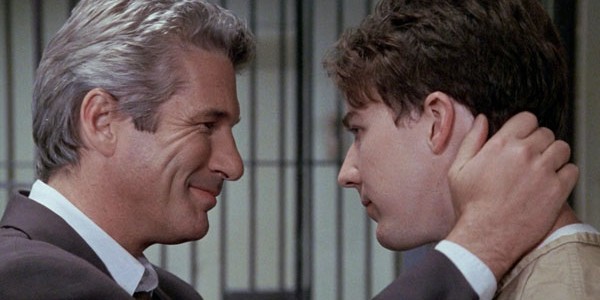
An altar boy is accused of murdering a priest. A high-powered, cynical attorney takes on the case. But this is a case different from his past ones. The defendant’s name is Aaron, a homeless boy before he was taken in by the Archbishop.
The counselor is convinced that Aaron is innocent, but after watching a video he begin to think that maybe his client has had some good reasons to kill the priest. After visiting the psychologist, Aaron’s other personality, Roy, is revealed. The counselor insists that Roy killed the priest, not Aaron. Aaron is just a good shy innocent man.
Norton made this motion picture debut in 1996. He was a Yale graduate, a multilingual handsome man, but there were many other important actors fighting for the role back at the time. As we all know now, he beat them all. He made a breathtaking breakout and received an Oscar nominee for Aaron/Roy.
Edward Norton’s performance is one of the most deserved praised debuts ever.
Author Bio: Lediona Kasapi is an independent filmmaker who thinks that a good film is one that deserves to be watched inside an art gallery. You may follow her on twitter @led_kasapi.
